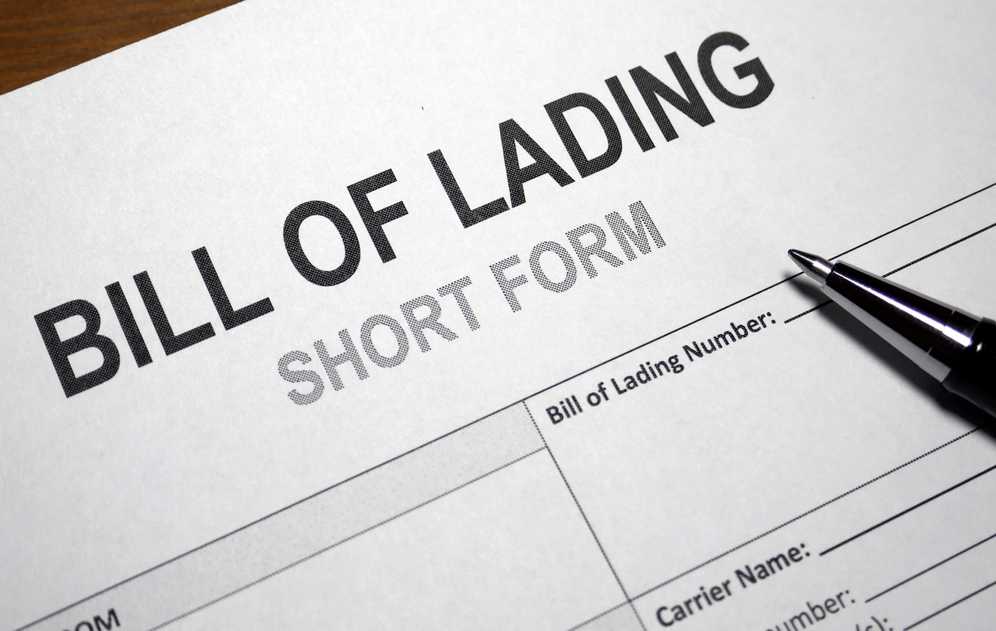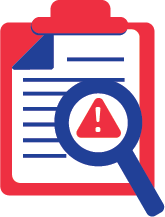What is a Switch Bill of Lading?
Much can change in the process of sending goods from one place to another. Corrections or changes to the original bill of lading require the issuance of another set with the correct data through a replacement bill of lading
When we talk about shipping documentation, the first thing that comes to mind for many is the bill of lading. A standard bill of lading is a document confirming that the transport company has received goods from the shipper for transportation. It also serves to confirm the ownership of the cargo.
Although there are several types of bills of lading, what does it have to do with replacing a bill of lading?
A changed bill of lading should not be confused with another type of bill of lading. This is another set of bills of lading issued by the shipping company and replaces the first set of originals issued by it at the time of shipment.
A switch of bill of lading may be issued at any time after the cargo has left the port of departure, but before it has been handed over to the original consignee. So, what is the need to issue a second set of bills of lading?
Although there are several types of bills of lading, what does it have to do with replacing a bill of lading?
A changed bill of lading should not be confused with another type of bill of lading. This is another set of bills of lading issued by the shipping company and replaces the first set of originals issued by it at the time of shipment.
A switch of bill of lading may be issued at any time after the cargo has left the port of departure, but before it has been handed over to the original consignee. So, what is the need to issue a second set of bills of lading?

Much can change in the process of sending goods from one place to another. Corrections or changes to the original bill of lading require the issuance of another set with the correct data through a replacement bill of lading.
While there are very minor changes to the original bill of lading, there may be other changes that require a new set to be issued.
These include changes to the port of discharge, the buyer or consignee, a product description that includes full product information, or certain specifications or trade terms. Any of these prearranged items may be changed during the shipment of the goods.
Shippers sometimes request a bill of lading change to hide the name of the actual seller or even mislead the buyer as to the actual country of origin of the shipment. While not very ethical, some shippers do this for a variety of reasons.
A bill of lading for change cannot be issued while the original kit is in use or the buyer has already taken delivery.
The first set of the original bill of lading must be returned to the issuing shipping company with a signed and stamped request from the party authorized to request the change, which in most cases will be the original shipper. This request must be confirmed by the consent and permission of the buyer in writing.
After the issuance of a replacement bill of lading, the first set ceases to be part of the shipping documents for a particular lot. The most important thing here is that there can never be two different sets of bills of lading for the same cargo.
Global trade and transportation of goods is a dynamic area that is undergoing continuous transformation. Buyers and sellers negotiate the best deals and terms for their goods.
Certain conditions relating to goods that have been sold to the buyer and brought on board the vessel to its destination may be changed during its voyage. In such cases, the original terms of trade between the seller and the buyer, stated in the original bill of lading, must be changed.
Parties to a trade agreement may sometimes agree to change the original port of discharge for reasons beneficial to both parties. Sometimes, to correct an error or add additional information for customs clearance purposes, it may be necessary to change the product description. This is done primarily to meet legal or government import requirements.
It is also common practice to sell goods in transit to another buyer. In all of the above cases, the original bill of lading must be amended to reflect the new information.
Clearance of cargo at the port of destination may be disrupted if the original bill of lading is retained and submitted for clearance. In most cases, the bill of lading will have to be replaced with a new set, which will contain all the corrected details. A replacement bill of lading issued subsequently will contain the correct and amended details to facilitate customs clearance of the cargo at the new port of destination by the rightful buyer.
While there are very minor changes to the original bill of lading, there may be other changes that require a new set to be issued.
These include changes to the port of discharge, the buyer or consignee, a product description that includes full product information, or certain specifications or trade terms. Any of these prearranged items may be changed during the shipment of the goods.
Shippers sometimes request a bill of lading change to hide the name of the actual seller or even mislead the buyer as to the actual country of origin of the shipment. While not very ethical, some shippers do this for a variety of reasons.
A bill of lading for change cannot be issued while the original kit is in use or the buyer has already taken delivery.
The first set of the original bill of lading must be returned to the issuing shipping company with a signed and stamped request from the party authorized to request the change, which in most cases will be the original shipper. This request must be confirmed by the consent and permission of the buyer in writing.
After the issuance of a replacement bill of lading, the first set ceases to be part of the shipping documents for a particular lot. The most important thing here is that there can never be two different sets of bills of lading for the same cargo.
Global trade and transportation of goods is a dynamic area that is undergoing continuous transformation. Buyers and sellers negotiate the best deals and terms for their goods.
Certain conditions relating to goods that have been sold to the buyer and brought on board the vessel to its destination may be changed during its voyage. In such cases, the original terms of trade between the seller and the buyer, stated in the original bill of lading, must be changed.
Parties to a trade agreement may sometimes agree to change the original port of discharge for reasons beneficial to both parties. Sometimes, to correct an error or add additional information for customs clearance purposes, it may be necessary to change the product description. This is done primarily to meet legal or government import requirements.
It is also common practice to sell goods in transit to another buyer. In all of the above cases, the original bill of lading must be amended to reflect the new information.
Clearance of cargo at the port of destination may be disrupted if the original bill of lading is retained and submitted for clearance. In most cases, the bill of lading will have to be replaced with a new set, which will contain all the corrected details. A replacement bill of lading issued subsequently will contain the correct and amended details to facilitate customs clearance of the cargo at the new port of destination by the rightful buyer.
Why change the bill of lading?
The question often arises as to whether a bill of lading is applicable if the shipment does not match the loading date. No, absolutely not. As we saw earlier, the new bill of lading replaces the existing bill of lading. If there are no dates in the stack, the bill of lading has not yet been issued and therefore a replacement bill of lading is not applicable.
What is stack date?
Stacking dates are dates set by the port within which containers booked for sailing must arrive at the port. Usually they vary from 2 to 5 days.
Poor planning, incidents beyond the control of the shipper, such as strikes, natural disasters, etc., may be the reasons why the container could not reach the port on time. Containers that miss their stack dates are generally not allowed into the port. Then he will have to make the next flight from the port on another ship.
What is stack date?
Stacking dates are dates set by the port within which containers booked for sailing must arrive at the port. Usually they vary from 2 to 5 days.
Poor planning, incidents beyond the control of the shipper, such as strikes, natural disasters, etc., may be the reasons why the container could not reach the port on time. Containers that miss their stack dates are generally not allowed into the port. Then he will have to make the next flight from the port on another ship.
Add dates and switch accounts
While issuing a switch bill of lading, it must be noted that there are certain things that should not be changed from what is mentioned in the original.
The basic description of the cargo cannot be changed as the contract to sell and buy is for specific commodities. Any changes to the basic description would change the contract completely. The description shown on a bill of lading can be elaborated in the switch bill of lading to meet certain requirements.
The base quantity of the cargo will also not change as the cargo is already on its voyage.
In case of hazardous cargo, the Dangerous Goods Declaration (DGD) will be the same as it covers the items coming under the dangerous goods category showing the special packaging and packing requirements, marks, and labels on them.
The undertaking that all national and international laws have been followed for transporting hazardous goods will also remain unchanged.
Similarly, cargo that is transported in refrigerated containers (reefers) will have a set of original instructions and details of the goods. This set of instructions and details will be the basis for its temperature and humidity settings inside the reefer container that will remain unchanged throughout the voyage.
Read more about Why your cargo has not yet arrived at the port or the main reasons for the delay of vessels
The basic description of the cargo cannot be changed as the contract to sell and buy is for specific commodities. Any changes to the basic description would change the contract completely. The description shown on a bill of lading can be elaborated in the switch bill of lading to meet certain requirements.
The base quantity of the cargo will also not change as the cargo is already on its voyage.
In case of hazardous cargo, the Dangerous Goods Declaration (DGD) will be the same as it covers the items coming under the dangerous goods category showing the special packaging and packing requirements, marks, and labels on them.
The undertaking that all national and international laws have been followed for transporting hazardous goods will also remain unchanged.
Similarly, cargo that is transported in refrigerated containers (reefers) will have a set of original instructions and details of the goods. This set of instructions and details will be the basis for its temperature and humidity settings inside the reefer container that will remain unchanged throughout the voyage.
Read more about Why your cargo has not yet arrived at the port or the main reasons for the delay of vessels
What Should Not be Changed in a Switch Bill of Lading

TOP 5 factors contributing to lower fuel costs for Shipping companies
Get a presentation with a full description of the features and free pilot project with trial of Marine Digital FOS for 2 months
"Clicking the button, you consent to the processing of personal data and agree to the privacy policy"

Get an overview "The Pathway to Zero Carbon Shipping:
IMO Compliance and CII Optimization through SEEMP" on email and download it for FREE! Leave your email now!
"Clicking the button, you consent to the processing of personal data and agree to the privacy policy, as well as consent to subscribe to the newsletter. "
Аdvantage of Fuel Optimization System from Marine Digital:

Marine Digital FOS can be integrated with other system and third-party's solutions through the API. To implement vessel performance monitoring for any vessel, we are using mathematical algorithms, machine learning and the same equipment as in FOS. The more data we collect from vessels, the more precise reports and recommendations our system will perform according to your individual requirements in fleet management.
If you have any questions about the solutions and the Marine Digital System platform, write to us, we will be happy to answer
If you have any questions about the solutions and the Marine Digital System platform, write to us, we will be happy to answer

Increased business process speed

Reducing to zero the number of errors

Best offer to the clients

Reduction in operating expenses
Have a questions?





